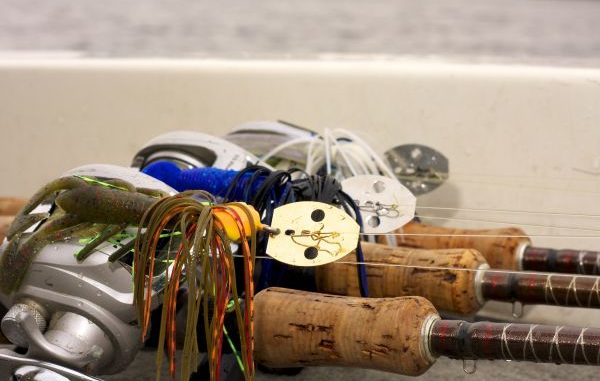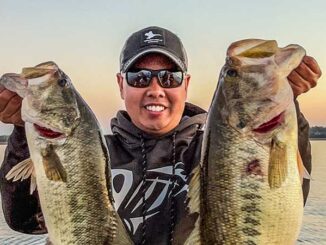
It’s hard to get me to believe that lure color makes much of a difference.
Do you really think a bass waiting on top of some coontail for something to eat looks at a chatter bait and decides to pass because it’s green pumpkin instead of black-and-blue?
That’s why it confounded me when Kenny Covington insisted that bass at Lake D’Arbonne in Farmerville prefer a black-and-blue chatter bait with a blue trailer, whereas at Caney Lake bass prefer a black-and-blue bait with a black trailer.
“Colors have always fascinated me,” Covington said. “I’m always playing with different colors and buying my own skirt material to try out some skirts that you can’t buy on a packaged bait.”
Although he has tried several different-colored chatter baits, Covington has settled on three primary colors he feels work best at Caney Lake.
Just as the chatter bait itself is situation-specific, each of these three colors are situational in their own right.
Black-and-blue
“This is just my old standby color because it seems to work all the time,” Covington acknowledged. “It’s what I tie on if I can’t figure anything else out. Black just kind of blends in with lots of different kinds of background, and it isn’t something gaudy that stands out.”
Covington said black-and-blue works at all the lakes and rivers in North Louisiana. However, he will change out trailer colors to find one the fish like best.
Blue glimmer
This shad-imitating color works best on windblown banks. Although some might argue this is because wind blows shad against the banks and pins them there, Covington doesn’t believe this is true.
“Rather,” he said, “I think it has more to do with the wind churning up the food chain on whatever bank it’s blowing into. It creates a dynamic environment on that windblown bank with lots of stuff exposed for fish to eat, and shad become a part of the turbulence.”
Bream
Covington feels this color works best around grass because of two reasons. First, it mimics all the small bream that hang out around grass beds and, secondly, the green color blends in with the green background.
“I also think bream works better in spring when bream bed in the grass,” he added. “Whatever color you use, I’ve always felt it was best to give bass just a sense of your bait rather than some wild color that stands out like a reflective road sign at night.

